The National Fire Protection Association estimates there are 111,400 fires annually caused by faulty electrical distribution systems, electrical appliances and equipment. These fires caused 3,785 injuries, 860 deaths and nearly $1.3 billion in property damage. Older electrical systems, combined with greater power consumption, have probably contributed to this problem.
The Fire Protection Research Foundation Residential Electrical System Aging Research Project will evaluate the condition of electrical systems in various older homes in order to determine how aging original installations and later modifications may relate to residential electrical fires.
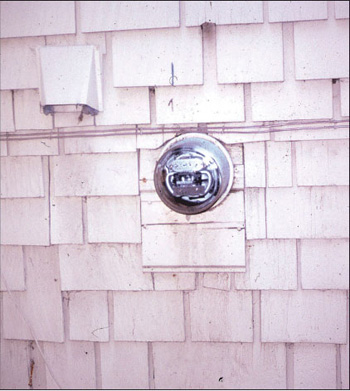
Photo 1. During pre-alt inspection, the electrical meter was seen on the outside of the building. The inspector asked to see the service panel inside the structure. It was built inside of the illegal bathroom shower! It was built without permit or inspection
The report on the first phase of this project revealed that improper installations and lack of adequate inspections and maintenance were evident in most of the homes they evaluated and age did not have a great impact on electrical product safety.
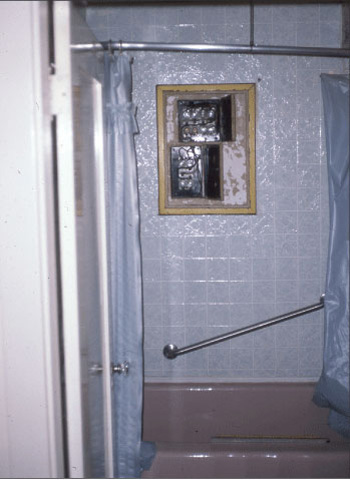
Photo 2. During pre-alt inspection, the electrical meter was seen on the outside of the building. The inspector asked to see the service panel inside the structure. It was built inside of the illegal bathroom shower! It was built without permit or inspect
When the project is completed, it will provide recommendations for increasing the safety of older residential electrical systems. These recommendations should call for better inspections and enforcement.
It is this latter item of better inspections and enforcement, we wish to address in this article.
We believe that requiring a pre-alteration cursory visual inspection (pre-alt) of the entire existing home, before issuing a permit to alter it, would greatly increase the safety of that older building.
Some jurisdictions may think that they have no authority to do a walk through pre-alt inspection; they’re wrong. Many jurisdictions have been doing them successfully for over 50 years.
During the pre-alt inspection, the inspector (a certified and qualified combination inspector) will write up any code violation noticed. If your jurisdiction only has specialists, then each one would do a pre-alt for their specialty when alterations are requested. If, for example, the homeowner wishes to upgrade her electrical panel from a 100-amp to a 200-amp panel, a pre-alt inspection would be required before issuing the permit. During the pre-alt inspection, the inspector would write up all electrical, plumbing, mechanical and building code violations noticed (violations that involve fire and life safety issues).
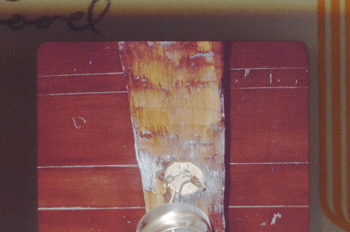
Photo 3. An illegal light fixture installation on a ceiling beam. The junction box is a hole cut out of the beam
A permit will be issued for both the service upgrade and for work required to correct all noted violations.
All noted violations would have to be corrected; however, once the electrical violations are corrected, the new 200-amp service would be signed off and authorized to be energized. Other plumbing, mechanical or building outstanding violations not corrected would be referenced on another correction notice and ordered to be corrected within a specified time (depending on the nature of the violation).
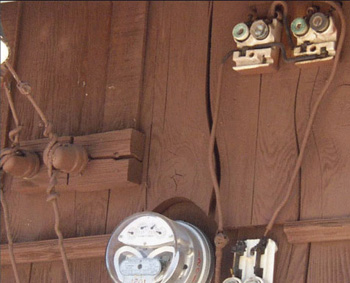
Photo 4. Called out for a plumbing pre-alt, included a correction to upgrade service. See any hazards?
Building departments that look only at what the permit was written for will see only that item and miss the open splices, missing cover plates, broken switches and receptacles, zip cord wiring, extension cords through walls and doorways and the lack of GFCI devices where required by code [receptacle replacements and non-grounded circuits with grounding receptacles, see Section 406.3(d)].
If the inspector approves the service upgrade and the home is energized without correcting all of the existing violations, the issuing agency may be deemed negligent by a jury in the event of a subsequent fire or shock accident (see photos 1–9 of electrical hazards identified during pre-alteration inspections).

Photo 5. During a pre-alt inspection this was detected. The owner cut into the service entrance raceway and tapped into the unmetered service entrance conductors.
The authors have a combined 60 years of experience in building inspections and have compiled the following electrical inspection checklist of typical code violations found in existing older buildings. Most of these violations are the result of improper original installations, modifications without permits and inspections, and the lack of proper maintenance.
Electrical inspection checklist for residential remodel/upgrade projects and suggested requirements for modernizing older electrical systems
I. Service equipment and subpanels
- Working space [110.26(A)]
- Illumination for indoor equipment [110.26(D)]
- Overhead service drop clearances [230.9, 230.24]
- Meter height (per utility)
- Height of C/Bs and disconnects [404.8]
- Construction of riser and weatherhead [230.26, 230.27 and 230.28]
- C/Bs must be brand/type per panel label or listed classified type [110.3(B)]
- Maximum number of disconnects [230.71]
- Isolate neutrals in sub-panels [408.40]
- Correctly labeling all circuits [408.4]
- Multi-wire branch circuits on opposite poles and handle ties where required [100, 210.4]
- Proximity of service equipment to gas meters, etc. [per utilities]
- Conductor/splice fill in panelboard enclosures and outlet boxes [312.7, 312.8 and 314.16]
- Dead fronts missing [110.3(B)]
- Extension cord wiring [400.8]
- Exposed Romex outside [334.10(A), 334.15]
- Broken conduit, supports and connections [110.3(A) and (B)]
- Older swimming pool hazardous wiring [underwater luminaires (light fixtures), flush deck J-Boxes, etc.] and lack of GFCI devices [680]
- Knockouts missing [110.12(A)]
- Old unused wiring left in place [110.2]
- Open lamps/pendant luminaires in clothes closets [410.8(C)]
- Reverse polarity [200.11]
- Overfusing Edison-base fuses [240.4, 240.51(B)]
- Dwellings wired with aluminum conductors [110.14(A), U.S. Consumer Product Safety Alert]
II. Grounding and Bonding
- Verify grounding electrode system [250.50, 250.52]
- Supplement the metal underground water pipe with an additional electrode [250.53, 250.54 and 250.56]
- Check all old/existing grounding electrode/conductor connections. Over time and due to maintenance of the plumbing/water systems the GEC connections can become undone, corroded or compromised; if it is not possible to verify the GEC connection(s), then new connections should be required [250.70].
- Verify the proper grounding (bonding) of all receptacle outlets [406.3].
- Verify the proper bonding of all metal piping, including the gas piping [250.104].
- Verify the proper grounding and bonding of all pool and spa equipment [680].
III. Old/Existing Branch-Circuit Wiring
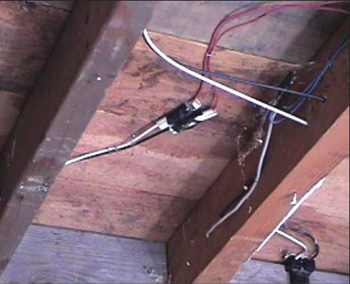
Photo 6. Open splice and wiring without a proper j-box and raceway
A case can be made for requiring the replacement of all receptacles and switches in the dwelling. This would allow the electrician to inspect each outlet box for proper connections, get the switches bonded to the equipment grounding system as is now required, install GFCI devices where required by current code, install/replace cover plates, and generally remedy many of the sins caused by homeowners and handymen over the years since the original wiring was installed. This last statement cannot be overemphasized.
A thorough inspection should be made of all wiring that can be accessed in attic and underfloor crawl areas. These are places where, again, our weekend warriors tap into otherwise healthy wiring to add outlets, ceiling and attic fans and Lord knows what else. Typically, this added work is accomplished with tape and wire nuts without the benefit of a J-Box. Many people believe that just touching two conductors together and putting tape on them is a good connection. What that procedure is really good for is starting fires!
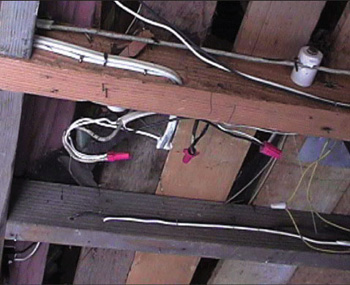
Photo 7. Tapping off a knob-and-tube wiring without a j-box and equipment grounding conductor connection, a common violation in older homes.
Ceiling-mounted luminaires should be removed in order to inspect the wiring in the outlet box. We are continually finding that the luminaires are overlamped and, over time, the excessive heat destroys the insulation of the wiring in the outlet box.
Bob’s Special Note
The homeowner should be professionally interrogated using the most exacting techniques to extract the truth about what he has really done to the wiring system over the years. I wish I had the time back that I have wasted because I believed the homeowner when he said, “I never touched that wiring. . .”
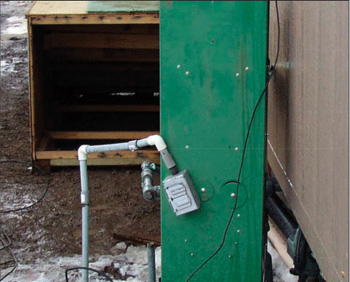
Photo 8. If this were a hose bib connection, it might be legal, but it’s electrical! Some violations are easy to spot.
If the homeowner has a pickup truck, a toolbox or a charge account at the hardware store, run like the wind!
When NFPA’s Aging Research Project is complete, we feel that their findings and conclusions will be similar to their phase I results: that most of the violations are the result of improper installations, lack of permits, inspections and maintenance. Through our experience of inspecting and repairing older homes, we have already come to that conclusion. We have also come to the conclusion that improper work done without permits and inspections, as mentioned in this article, will remain unseen by the inspection authority, unless inspected when alteration work is requested through a pre-alteration inspection.
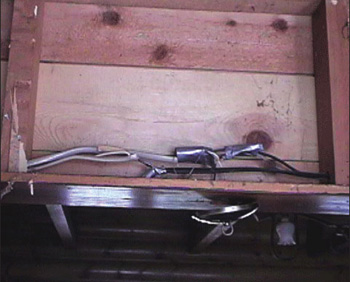
Photo 9. Homemade light fixture with an open splice above the ceiling to energize the ballast below. They took duct tape to the moon, so it must be o.k. for splices here. Wrong!













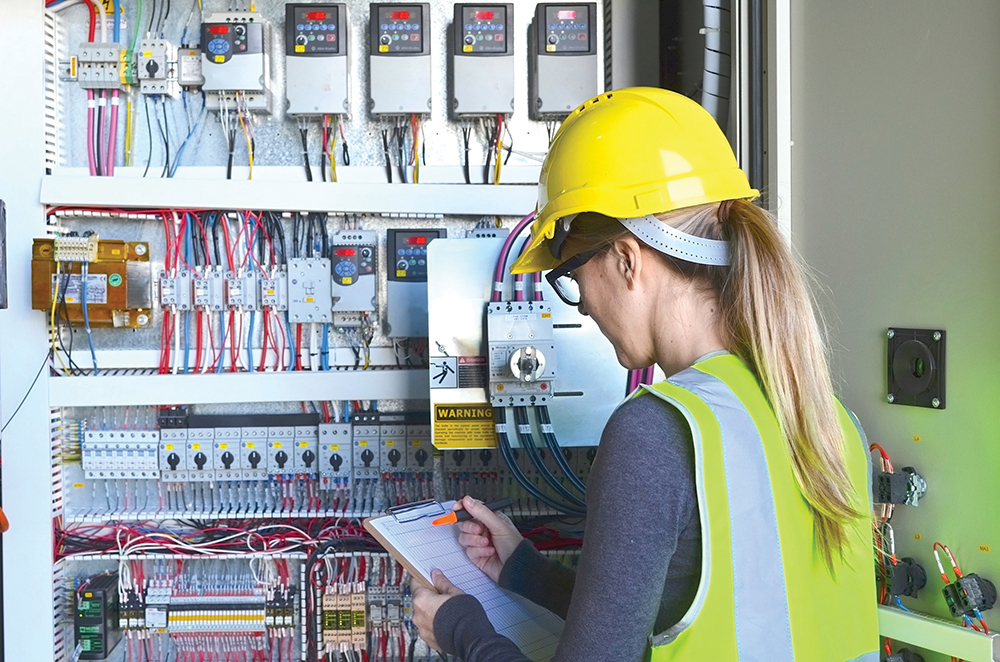
Find Us on Socials